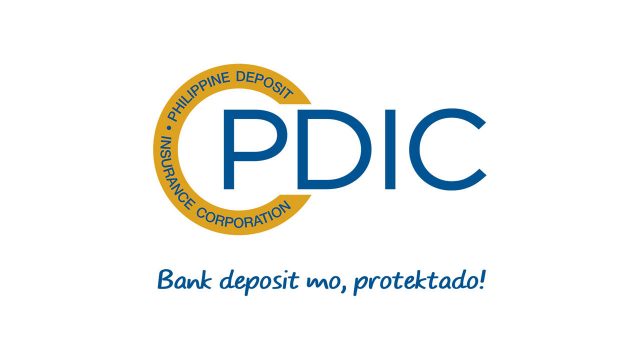Corruption in public spending is no longer just a governance failure; it has become a crisis of legitimacy. In the Philippines, after weeks of anguished revelations in both the Senate and the House of Representatives, public outrage over anomalous flood-control projects is powerful, and rightly so. But exposure alone does not repair what has been broken. Unless citizens see justice applied evenhandedly with powerful actors in the Senate, House, Executive, and their private-sector collaborators identified, charged, and, where warranted, convicted, the same cycle of theft, impunity, and cynicism will hollow out government capacity and public trust.
SOBRA NA! TAMA NA!*
Research on corruption prevention is clear: real accountability demands more than rules and audits. A comprehensive 2023 review for Public Safety Canada distils four mutually reinforcing approaches: 1.) value-based integrity and ethical leadership; 2.) compliance mechanisms (rules, monitoring, sanctions); 3.) risk-management (corruption risk assessments, targeted safeguards); and 4.) transparency and civic participation visible and auditable. No single technical fix suffices; meaningful change depends on a calibrated mix of culture, control, diagnostics, and public engagement.
The World Bank’s anti-corruption agenda of March 2023 strengthens this framework. It points to open contracting and e-procurement namely, beneficial-owner disclosure, stronger public financial management, sanctions and debarment regimes, and technology and standardized data for oversight. It also insists on diagnostics — mapping corruption risk by project and sector — and combining prevention, detection, and enforcement. Corruption is not merely moral decay; it undermines growth by eroding efficiency, productivity, and blocking the very goals of poverty reduction and shared prosperity.
GLOBAL PRECEDENTS AND RECENT ALARMS
These frameworks are not theoretical. Around the region, citizens are reacting when elites profit while ordinary people suffer. In Nepal, for example, in early September, Gen-Z protesters, students and young people, flooded Kathmandu and many towns after the government banned 26 social media platforms, including Facebook, WhatsApp, X, and YouTube. While the immediate trigger was censorship, the deeper grievances were corruption, nepotism, economic stagnation, and visible elite excesses. Their viral messages sound familiar: “Shut down corruption, not social media,” “Youths against corruption,” “Where has taxpayer money gone?” With very aggressive response from security forces, at least 19 people were reportedly killed, hundreds injured. The government lifted the ban, the Prime Minister resigned, and an investigation panel was promised.
In Indonesia, public discontent has mounted over economic hardship, perceived corruption, and the impunity of public officials. Early this month, the Indonesian Parliament moved to fast-track a long-delayed asset forfeiture bill, a tool to seize wealth from officials whose assets are vastly disproportionate to their declared income, after protests and pressure over politicians’ lavish perks amid economic strain. President Prabowo Subianto, in public dialogues, has acknowledged corruption as “worrisome” and pledged action. It is quite obvious that when dissatisfaction becomes visible, as when public policies are tweaked to award inordinate benefits to the powerful, governments can be pushed toward reform.
These Public Safety Canada and World Bank frameworks, validated by the Nepalese and Indonesian experiences, yield a demanding but necessary conclusion: technical measures — e-procurement, geotagging, digital payments — are essential but far from sufficient. When accountability stops at mid-level functionaries like district engineers and ordinary staff, while those who enable system-wide capture — legislators, cabinet secretaries, political patrons — remain untouched, the deterrent value of rules is nullified.
Filipinos, fortified by years of struggle and emboldened by EDSA victories, will not accept prosecutions of expendable scapegoats while sponsors walk free. The result is likely a powder keg of public anger that will eventually explode.
This is the core political-economy challenge: prevention requires both sound systems and credible enforcement. Exposure without consequences simply breeds weary resignation. But Filipinos need not despair or surrender.
What must the Philippines do differently — and urgently?
1. Make enforcement at the top non-negotiable. President Ferdinand Marcos, Jr.’s proposed independent investigative commission must have subpoena and contempt powers and be truly free to investigate anyone — including those removable only via impeachment. Its findings should feed directly into the Department of Justice and the Office of the Ombudsman, which must resist political pressure. Technical instruments will only gain credibility if used visibly in high-stakes cases.
2. Institutionalize asset recovery, forfeiture, and unexplained wealth laws. Existing laws that allow forfeiture of wealth manifestly disproportionate to lawful income must be used aggressively and transparently. Public, high-profile asset recovery cases against top-level beneficiaries of corrupt contracts do more than punish — they restore stolen resources and shift public expectations of what is possible.
3. Bind technical safeguards to real enforcement. Open contracting, beneficial-owner disclosure, geotagged and time-stamped project validation, e-procurement, and automatic debarment for firms implicated in serious fraud must be standard. But these tools only bite when violations trigger sanctions. Justice begins when hearings and investigations conclude with consequences — not just press statements.
4. Reform conflict-of-interest and campaign finance. Legislators with financial stakes in firms bidding on government contracts, otherwise hidden interests, or entanglements in campaign donations must face mandatory recusal rules, disclosure, and prohibitions. Ending the revolving door between political support and contracting rents is essential. The structural incentives — what benefits elites — must be changed, not just the monitoring layers.
5. Strengthen civic participation and whistleblower protection. Civil society can extend oversight far beyond what government alone can do — but only if it has access to reliable data and secure channels to report wrongdoing. Whistleblowers must be protected from retaliation. When young people can expose wrongdoing through social platforms as in Nepal, it shows how transparency plus citizen voice can rapidly amplify pressure.
6. Demands for judicial reform and timely adjudication. Long investigations without trials, plea bargains that spare major actors, and procedural delays all feed cynicism. Courts must be resourced, insulated, and held to ensure high-profile corruption cases are tried efficiently, fairly, and with transparency. Once again, the public must see that justice is not only done, but seen to be done.
WHY THIS IS URGENT — AND WHAT IS AT STAKE
When accountability reaches top levels, returns are not merely moral. Public resources are deployed more productively; disaster resilience improves; fiscal space is protected for social protection rather than leakages; investor confidence grows; inflation and supply disruptions are eased. On the other hand, continued impunity magnifies damage: waste, weakened capacity, higher risk premiums, and persistent inflation when disasters meet inadequate public goods.
Recent indicators in the Philippines confirm this danger. The 2025 CEO Survey by the Management Association of the Philippines and PwC indicates CEOs remain highly dissatisfied with the government’s anti-corruption performance. In turn, domestic investment’s weak contribution to GDP seen in Q2 of 2025 may reflect further erosion of trust in future readings of national output.
These proposals are not calls for vindictive vengeance; they are a roadmap to restore institutional credibility so that preventive tools, notably those articulated by Public Safety Canada and the World Bank, can actually work. Singapore’s CPIB, Indonesia’s KPK, and Hong Kong’s ICAC show that when enforcement reaches the top, systemic and cultural change becomes possible.
For the Philippines, the task is to unite powerful technical controls with enforcement that is visible, impartial, and unapologetically reaches to the top. Until citizens can see that the “big fish” are held to account, transparency reforms and procedural audits will remain at best partial remedies.
To rebuild the social contract, the government must prove that public office is a public trust, not an entitlement. That proof requires more than exposés and hearings: it requires the identification, prosecution, and conviction of those at the heart of networks that hollow out public investment. Only then will citizens believe the system works — and only then will preventive instruments translate into lasting reform.
The research consensus is clear: prevention, transparency, participation matter — but they are only effective when backed by consistent, impartial enforcement at the highest levels. When even “big fish” are flushed out, then the system begins to heal. n
*That’s too much! That’s enough!
Diwa C. Guinigundo is the former deputy governor for the Monetary and Economics Sector, the Bangko Sentral ng Pilipinas (BSP). He served the BSP for 41 years. In 2001-2003, he was alternate executive director at the International Monetary Fund in Washington, DC. He is the senior pastor of the Fullness of Christ International Ministries in Mandaluyong.















